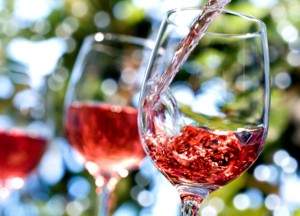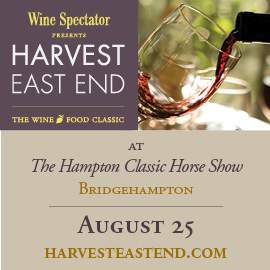Rosé Means Dry? In the Finger Lakes, a New Idea Gains Momentum
Finger Lakes winemaker Vinny Aliperti is taking on Shakespeare, whether he knows it or not. It was The Bard who famously wrote, in Romeo & Juliet, “A rose by any other name would smell as sweet.” It was his typically poetic way of saying that what we call something doesn’t matter; the content of that thing is what matters.
Maybe not. Maybe a name matters enough to affect public perception. Aliperti finds that to be true with rosé. Some Finger Lakes wineries have seen steady growth in sales and production of rosé, while others have stagnated. Some of that stagnation comes from bias, Aliperti says, which comes from lack of accurate information.
“One thing that does bother me are wines labeled ‘rosé’ even though they are in a decidedly sweetish style,” Aliperti says. “That is one area where consumers get thrown. In a perfect world, wines labeled ‘rosé’ should be dry. Let’s say under one percent residual sugar. Everything else should be called something else, such as blush, or pink wine.”
It’s a provocative point: Lovers of dry rose understand its value as a dry wine. But many customers might shy away solely based on the color of the wine and its pink cousin, white zinfandel. Aliperti’s proposal could make a dramatic impact in consumer education.
But here’s another way to attract more people to rose: Winemakers could do a better job making it. Fortunately, a growing number of delicious versions are readily available, not the least of which is Aliperti’s solid Billsboro rosé made from pinot noir.
The regional benchmark is the pinot rosé from Ravines Wine Cellars, where winemaker Morten Hallgren draws on his time living in Provence (where the world’s best rosé comes from). Hallgren makes a vital distinction when it comes to this style of wine: It is not meant to be drunk in serious settings, but winemakers must approach it seriously to ensure a good outcome.
“You don’t want to have to think too much about rosé when you’re drinking it,” Hallgren told me as we tasted a bottle of the excellent Anthony Road Wine Company 2011 Dry Rosé. “But you have to take it seriously when you’re making it. It’s not a throwaway wine. It can’t be your worst fruit. You’ll get off flavors. You find that in every region that makes rosé, and you find that in the Finger Lakes, too. I guess some people think it’s not a priority, and that can really show. You don’t just make rosé when you can’t ripen red wine grapes.”
Fortunately, rosé has gained a wider following not only in terms of consumer appreciation, but in winemakers who enjoy it. At least half a dozen Finger Lakes wineries that didn’t make rosé five years ago now do, and the list is gorwing by the year. Hallgren says his rather small allocation doesn’t last long, and last year he had to turn down interested retailers in Texas and other states. “We didn’t have enough to meet demand,” he says with a shrug.
It wasn’t always that way. Hallgren says the lesson is to start slowly with rosé. “I’d say, don’t start by making a thousand cases of it. Start with one hundred. See how customers react. Build production slowly.”
But that slow start is enough to turn off some producers who want faster results. “It’s easy to get impatient with rosé,” Hallgren says. “There are times of year when it doesn’t seem to sell at all. Educating consumers is worth the effort and can be rewarding.”
The Anthony Road we were drinking is a fine example of what can happen when a winery dedicates its best fruit to the cause. It’s a rose made from cabernet franc, which can tend to show some bitter green notes. But the Anthony Road version is pure watermelon, strawberry, melon rind and watermelon candy. Vineyard manager Peter Martini wants high quality cab franc in the hands of the winemaking team. The result is a wine that is on pace to sell out before half the summer has set.
“Demand is certainly growing,” Aliperti says. “So is the familiarity that dry rosé is supremely food-friendly and has a unique flavor profile, borrowing flavors from both white and red wines.”
By changing the labeling rules, a wider range of customers might finally turn to this wine that is uniquely suited for summer — and seasonal food. Shakespeare was brilliant, but not infallible. Or perhaps he would note that a rose by any other name would smell as sweet, but a rosé is a different story. The accent mark makes all the difference.















We bought several bottles of the Anthony Road rose last week - it’s a little fruitier than our favorite NYS rose (Wolffer, LI south fork) but still a total winner.
Definitely on the fruity end, but not cloying. I would prefer a tinge more savory notes, but it’s so delicious that it’s hard not to drink every day.
Paul: Both are very good roses…but I agree, the ARW is definitely much more fruity. Of course, it’s all cab franc and the Wolffer is a blend of red grapes and chardonnay!
So can we apply the same logic to Riesling? Why must we put dry in front of Riesling when it comes from the Finger Lakes to signify it is not sweet?
Ooopps, did I just kick the hornets nest or what?
In many ways, I’m with you on this. I think Riesling doesn’t have to mean “not dry.” But I’m not sure this is apples to apples. I’m not there in the trenches selling rose every day, so I try to give Vinny enough credit when it comes to consumer perception. To me, “rose” does indeed mean “dry.”
Maybe we should apply the IRF scale to rose as well /sarcasm
if you put “blush” on your label, you are simply dating your winery. I sell a boatload of rosé from around the world, and they are all dry, or perceivably dry. Leave the sugar to the riesling and dessert wines. Call it “Rosé”, keep it dry, treat it like you would your flagship wine, and you put yourself right there along with the thinking of what the great rosé producers of the world are doing.
Man, do I agree with this. Treat the wine with some level of respect. I think Morten is right: If you’re just sloughing off your unripe fruit for rose, you shouldn’t have high expectations.
Funny - on my lunch hour today I stoped in at Barnes & Noble and browsed through Jay McInerny’s new book, in which he has a chapter on rose. He says a lot of the same things that everyone else here is saying. Could be that rose is finally being taken seriously in the US?
Perhaps a different name than BLUSH would be appropriate? I’m a wine geek, so I don’t think this is needed - but the moment on put myself in the seat of my day job (marketing) I can’t help but feel for these producers.
We need to face the fact that MOST wines are bought because of a label, a score and/or a shelf talker - so these all need to somehow convey what’s in the bottle as precisely as possible.
Yes, I know, Riesling’s in the same boat and I’d PERSONALLY wish we could skip the “dry” on the label. But practically speaking, that single word tells so much of the story. I have so many friends that say, “I love Riesling, but how do I know if it’s going to be dry or sweet?” If you can answer that in a single sentence, I’ll concede. Otherwise, let’s allow (and encourage) producers to explain the wine through the label as much as possible.
Jared,
I say back label. Put the information on the back label so that it is clear and the consumer is not wondering by what the producer means by dry. The problem is one winemakers “dry” is another winemakers “semi”….
Rick,
I think you make a good point about putting it on the back label. To avoid confusion and the problem of “one winemakers dry is another’s semi” is to put down the RS on the back label, maybe even along with acidity. That is the kind of info I would appreciate.
Mike
Back label makes sense - logically; but do consumers read them? (Honest question, I’m not sure.) Bottom line for me as a marketing guy - make sure the product describes itself to the consumer no matter how you do it.
And when it comes to rosé, a less “serious” wine, can’t we be more tolerant about what’s on the label?